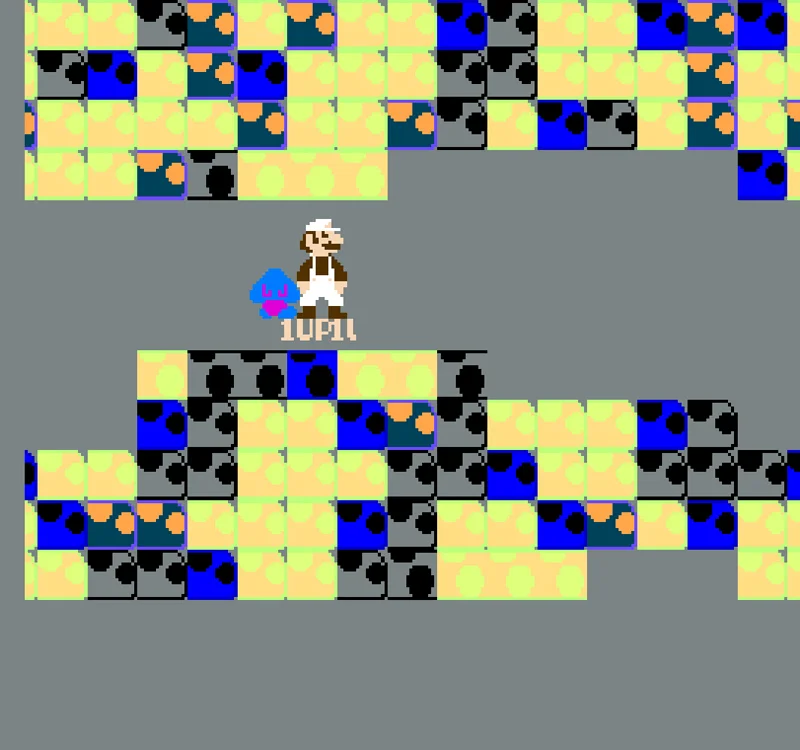Super Mario Movie
In the world of Super Mario Movie (2005), Mario lives in his cartridge. He has lived the same life for a long time, and continues to do so, until one day the data becomes corrupt. The opening shot is Mario standing on a block in the middle of the sky, not expecting for the world around him to deteriorate to a glitchy mess. But as time progresses, the glitches become all that is visible, and the sounds and music become more chaotic. Even Mario begins to change colors and form due to his environmental changes.
To create this piece, Cory Archangel (video artist, game artist and coder) teamed up with Paper Rad (chiptuner) to make a cinematic and non-controllable NES ROM loaded onto a chip and placed into a custom cartridge. Being a chiptune artist myself, I can truly appreciate art through the medium of repurposed tech and gaming systems. At the same time, it is quite a niche market for this piece.
Reception has ranged from people not understanding the irony, to people who get far too into the irony, but the overall it has been quite well received. But of course most people who actively seek an obscure video like this are probably going to enjoy it.
“Surely a masterpiece. Solid, trippy, hypnotizing. Both visuals and music are just soooooooo brilliant. Deserves a billion likes.” Егор Сидоров (YouTube commenter)
“There used to be (is?) an older version of this that was significantly less arty-farty, with lines that actually made some sense. Worst part about this is just how slow it is, though, several scenes that go on for minutes with no reason[.]” Xkeeper (YouTube commenter)
Though the piece was probably made in a way that irony took the front seat, it also holds a solid meaning. This work should be seen as a commentary on the chaos that we experience in our everyday life. One day it could come crashing down upon you. We interact with our environmental challenges.
The artistic impact is related to the audible and visual aesthetic paradigm shift that began right around 2003-2004 when 80s and 90s video game systems were being reworked to create a Chiptune era of art. Though that era has largely subsided in popularity following the change to less vintage digital sounds in popular EDM, and more of an analog uprising, you could say that the non-mainstream attitude of the original chiptuners and hackers was the post hip-hop artistic generation in using tools and toys in unintended ways. Whether it is vinyl being scratched, or a guitar being converted to electric by Les Paul. That is exactly what the Chiptune community does in their work, and what Archangel does in several of his works. He repurposes.
Johan Kotlinski is the man behind one of the most used sideloaded Game Boy music sequencers today. He coded Little Sound DJ (LSDJ), which allows for a relatively easy chiptuning experience. From composition, to live performance, you can create music on a Game Boy cartridge. He first coded this in the late 1990s as a private .gb file that he shared with his friends. Then in 2000, he released it under the name of Little Sound DJ. This takes a game system, and transforms the purpose into something completely different than the original intent. Though the works are similar in their digital canvas, Kotlinski made something that one can interact with, or a blank canvas to create with. Archangel made his as an untouchable final product.
Another related work could be darNES, an NES cartridge that put a facade fork of Netflix on it. (Completely inefficient, but beautiful in a comedic sort of way.)
For more information on Chiptune culture, watch Reformat the Planet, or read about it on Wikipedia.
Display locations:
- January 15 2005 - February 26 2005, Deitch Projects, New York, NY
- April 02 2005 - May 22 2005, Migros Museum, Zurich, Switzerland



